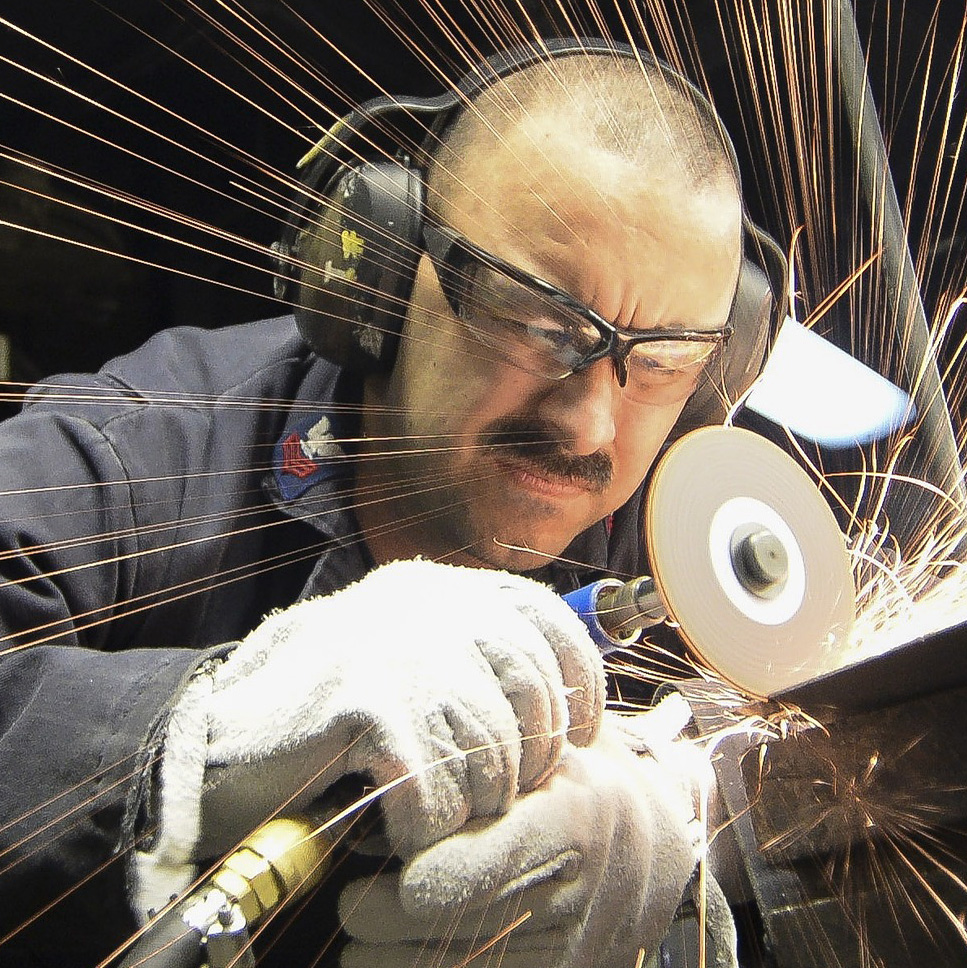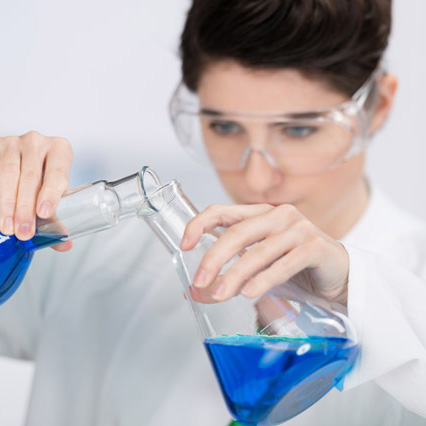We don’t realize how often in our normal day to day lives that we are exposing our eyes to danger of injury. From the wide range of injuries reported and treated in emergency rooms round the world it is evident that we are able to eliminate up to 90% of these injuries by taking some very simple and basic precautions to protect our eyes.
Young adults (below the age of 40), and children are at greater risk because most do not wear spectacles habitually, which do offer some protection. Wearing good quality safety specs can eliminate most injuries. Areas where specs should be worn include the kitchen (oil spatters while cooking), the workshop (as you walk in the door). While gardening (abrasions from twigs). As a parent, consider removing from your garden any plants or thorn bushes or trees that pose a threat to a child falling into such a plant or bush.
The most common places for eye injuries to occur are home work, and while taking part in sporting activities. Often, people in industrial settings are susceptible to projectiles that can injure the eye. At home, many household cleaners can cause injury to the eyes, in addition to various home improvement projects that have a potential for danger. The best advice we can give is to use your common sense. If you’re working on a project that can cause harm to your eyes, make sure you’re safe with the proper protective eyewear.
The most common causes of eye injuries are:
- Impact.
- Dust.
- Chemicals.
- Heat.
- Visible radiation.
- Ultraviolet radiation.
Most eye injuries can be prevented by taking simple precautions.
Protection at Work
Chemicals or foreign objects in the eye and cuts or scrapes on the cornea are common eye injuries that occur at work. Other common eye injuries come from splashes with grease and oil, burns from steam, ultraviolet or infrared radiation exposure, and flying wood or metal chips.
In addition, health care workers, laboratory and janitorial staff, and other workers may be at risk of acquiring infectious diseases from eye exposure. Some infectious diseases can be transmitted through the mucous membranes of the eye. This can occur through direct exposure to blood splashes, respiratory droplets generated during coughing, or from touching the eyes with contaminated fingers or other objects.
The Occupational Safety and Health Administration (OSHA) requires workers to use eye and face protection whenever there is a reasonable probability of injury that could be prevented by such equipment. Personal protective eyewear, such as goggles, face shields, safety glasses or full face respirators must be used when an eye hazard exists. The necessary eye protection depends upon the type of hazard, the circumstances of exposure, other protective equipment used and individual vision needs.
Workplace potential eye hazards are typically:
- Projectiles (dust, concrete, metal, wood and other particles).
- Chemicals (splashes and fumes).
- Radiation (especially visible light, ultraviolet radiation, heat or infrared radiation, and lasers).
Some working conditions include multiple eye hazards. The proper eye protection takes all hazards into account.
Protection at Play
Goggles and shields do much more than protect your eyes from injury. Many goggles or safety glasses come with tints to reduce sun glare, light filtering capabilities that make it easier to see certain colors (like yellow tennis balls), and polycarbonate lenses that stand up to sudden, sharp impact. Choose the right goggles or shield for your sport.
Sunglasses not only look good, they’re good for you. Protect yourself from harmful UV rays today to help prevent damage tomorrow. Be sure that your sunglasses block both UVA and UVB.
A hat will help block indirect sun, which can come into the eyes around the edges of sunglasses.
Children
When children participate in sports, recreation, crafts or home projects, it’s important for them to know eye safety practices and use protective glasses as appropriate. Each year thousands of children sustain eye damage or even blindness from accidents at home, at play or in the car. More than 90 percent of all eye injuries can be prevented through use of suitable protective eyewear.
Sports deserve particular attention, because eye injuries occur fairly often in children and young adult athletes. Most sports-related injuries in the U.S. in children, occur between the ages of 5 and 14.
Some basic tips for parents:
- Children should wear sports eye protectors made with polycarbonate lenses.
- All chemicals and sprays must be kept out of reach of small children.
- Wear proper eye protection when you are doing hazardous hobbies, chores or mixing chemicals.
- Wear proper eye protection when you are playing sports such as tennis and Squash, and any sport where there is a bat and a ball involved.
- Never look directly at the sun.
- Wear a helmet when biking, skateboarding or rollerskating.
- Parents and others who provide care and supervision for children need to practice safe use of common items that can cause serious eye injury, such as paper clips, pencils, scissors, bungee cords, wire coat hangers and rubber bands.
- Teach your children to be eyesmart by safeguarding your own sight.
- Walk, don't run, with sharp objects such as scissors, pens, pencils and rulers.
- Avoid projectile toys such as darts, bows and arrows, and missile-firing toys.
- Use safety gates at the top and bottom of stairs. Pad or cushion sharp corners. Put locks on all cabinets and drawers that kids can reach.
- Do not allow your children to play with non-powder rifles, pellet guns or BB guns. They are extremely dangerous and have been reclassified as firearms and removed from toy departments.
- Do not allow children anywhere near fireworks, especially bottle rockets. These fireworks pose a serious risk of eye injury.
- When very small children (age 4 and younger) are bitten by dogs, eye injuries occur about 15 percent of the time. The dog is usually one the child is familiar with, and second attacks by the same dog are likely to cause more serious injury. It is recommended that any dog that bites a child be removed from the household.
- On the road, make sure children are properly secured in baby carriers and child safety seats and that the seat and shoulder belts fit well. Children age 12 and younger should never ride in the front seat. Store loose items in the trunk or secured on the floor, as any loose object can become a dangerous projectile in a crash.
- Learn basic first aid for your eyes in case an injury does occur.
Stats and Incidence
Eye injuries in the workplace are very common. The National Institute for Occupational Safety and Health (NIOSH) reports that every day about 2,000 U.S. workers sustain job-related eye injuries that require medical treatment. However, safety experts and eye care practitioners believe the right eye protection can lessen the severity or even prevent 90 percent of these eye injuries.
Workers experience eye injuries on the job for two major reasons:
- They were not wearing eye protection.
- They were wearing the wrong kind of protection for the job.
A Bureau of Labor Statistics survey of workers who suffered eye injuries revealed that nearly three out of five were not wearing eye protection at the time of the accident. These workers most often reported that they believed protection was not required for the situation.
If your eye is injured you should get immediate medical attention. 40% of hospital admissions for eye injuries are related to sports and 71% of those injuries happen to people under the age of 25.
Safety Devices
The main types of eye protection are safety glasses, safety goggles and face shields. Don't be put off wearing the appropriate protection by fogging and ill-fitting eyewear. You can buy anti-fogging lenses and anti-fogging lens wipes.
Safety glasses
- Look like regular spectacles but the lenses are more durable.
- Provide better protection against flying debris.
- May be low impact (no marking) or medium impact (marked with an I).
- Should also provide side protection.
- If you have a vision problem, you can use specially made glasses that have corrective lenses.
Safety goggles
- Fit snugly around your eyes.
- May offer an extra level of protection above that provided by safety glasses.
- May be low or medium impact.
Eye shields
- Cover your upper face.
- Have much the same function as goggles but are less likely to fog.
- May be low or medium impact.
- Spectacles can be worn beneath an eye shield.
Face shields
- cover your entire face.
- may be low impact, medium impact or high impact (marked with a V).
- Spectacles can be worn beneath a face shield.
Helmets or goggles with special filters are available to provide more protection for welders or people working with lasers.
Treatment
In the case of an emergency, seek medical attention as soon as possible following an injury, particularly if you have pain in the eye, blurred vision or loss of any vision. Several simple first aid steps can and should be taken until medical assistance is obtained. The full extent of the damage is not always apparent and even a seemingly minor injury may cause permanent damage if it is not treated immediately. Some particles, particularly metallic ones, can cause rusting spots on the eye if left untreated for several days. If you are unsure if the object is gone, do not delay medical care.
First aid for chemicals in the eye:
- Immediately flush the eye with water for at least 15 minutes. Place the eye under a tap or shower, use a garden hose, or pour water into the eye from a clean container.
- If you are wearing contact lenses, immediately remove them before flushing the eye.
- Do not try to neutralize the chemical with other substances.
- Do not bandage the eye.
- Seek immediate medical attention after flushing.
First aid for particles in the eye:
- Do not rub the eye.
- Try to let your tears wash the speck out, or irrigate the eye with an artificial tear solution.
- Try lifting the upper eyelid outward and down over the lower eyelid to remove the particle.
- If the particle does not wash out, keep the eye closed, bandage it lightly and seek medical care.
First aid for blows to the eye:
- Black Eye. If you are hit in the eye area, gently apply a cold compress without putting pressure on the eye.
- Crushed ice in a plastic bag can be placed gently on the injured eye to reduce pain and swelling.
- In cases of severe pain or reduced vision, seek immediate medical care.
First aid for cuts and punctures to the eye or eyelid:
- Do not wash out the eye.
- Do not attempt to remove an object that is stuck in the eye.
- Cover the eye with a rigid shield, like the bottom half of a paper cup.
- Seek immediate medical care.


